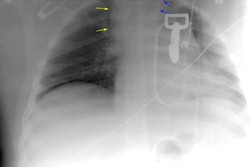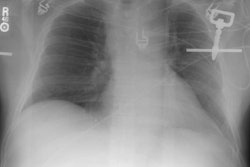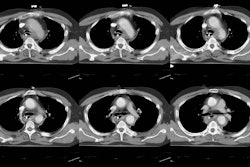ATLANTA - The radiology community is squandering its future by luring residents to private practice, skimping on research, and allowing other physicians to raid its turf, said Dr. Reed Dunnick during his presidential address at the American Roentgen Ray Society meeting Sunday.
Dunnick -- who has been chairman of the radiology department at the University of Michigan in Ann Arbor for the past decade -- titled his talk "Don’t eat the seed corn," drawing on the farming analogy to encourage radiologists to tend to medical imaging’s crop before it's too late.
"Seed corn was not eaten but was stored over winter to be planted in spring. I’m sure the pioneers who settled our country were tempted many times during the harsh winters they faced to eat that seed corn," Dunnick explained. "Thankfully for us, many did not. And so it is in radiology. Our field has grown tremendously. We are confronted with more work than we can manage. We’re faced with an erosion of our turf if we do not satisfy that clinical demand."
"We’re tempted to press radiology residents into clinical practice before they complete a fellowship," he said. "We’re tempted to reduce our research in order to meet clinical demand for service. We are, in essence, tempted to eat our seed corn."
In some respects, this cannibalization has been forced upon radiology by outside entities. In general, the demand for imaging services in the U.S. is increasing rapidly as the population grows larger and older, he said. Imaging has been yoked by the artificial constraints of managed care and the government, such as caps on the number of specialists on a staff, limits on the size of residency training programs, and tightened immigration laws for foreign physicians.
Add to that the advances in imaging technology that keep radiology in business, yet also require personnel to keep up with the workload. This is one reason why residents are courted by private practice to forgo fellowship positions for a permanent position and a hefty paycheck, Dunnick said.
But without the benefit of a fellowship, "the level of sophistication needed to provide value to our imaging services may be deteriorating. Neurosurgeons, neurologists, orthopedic surgeons, cardiologists, pulmonologists, to name just a few, may feel that they can interpret an imaging study in their area of clinical expertise as well as a general radiologist."
In some cases, these physicians feel they are more qualified than radiologists, as they have a superior understanding of the disease pathophysiology in their area, he added.
Poaching newly minted residents also has another undesirable effect: There is little left on the table for academic radiology to chose from.
"Academic radiologists recruit new faculty from their fellows. As the pool of fellows shrinks, the ability of an academic department to grow, or even replenish its staff, diminishes. This has the potential to lead to an even less desirable condition in which we are no longer advancing the field," he said.
But there are ways that the radiology community can protect itself, Dunnick said. First, the private practice community and academic institutions must continue to work together rather than compete for valuable resources.
"There is a full spectrum of university departments of radiology, from the highly academic departments with extensive research programs to those that concentrate on teaching and delivering high-quality clinical services. Indeed, some university departments are private-practice groups. In other cases, highly academic departments derive their revenue from patient care. And many private practices sponsor residency training programs and participate in research," he said.
In addition to promoting collaboration, the radiology community needs to invest in research programs by devoting time to study, prioritizing research methodology, encouraging residents to gain more expertise, and creating "a culture in which this research is valued."
The establishment of the National Institute of Biomedical Imaging and Bioengineering (NIBIB), as well as the appointment of Dr. Elias Zerhouni to head up the National Institutes of Health (NIH), should help radiology produce and prosper.
"Today’s research is tomorrow’s practice," Dunnick said. "We are facing challenges as significant as those of our pioneering ancestors. As a field, we must rise to the challenge."
By Shalmali Pal
AuntMinnie.com staff writer
April 29, 2002
Copyright © 2002 AuntMinnie.com



















